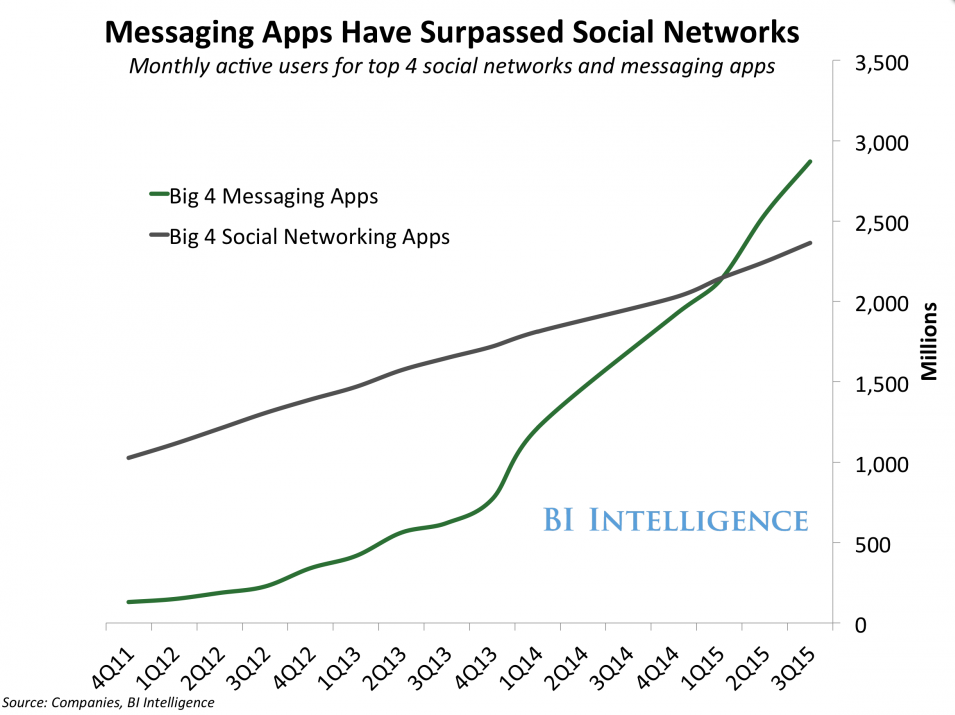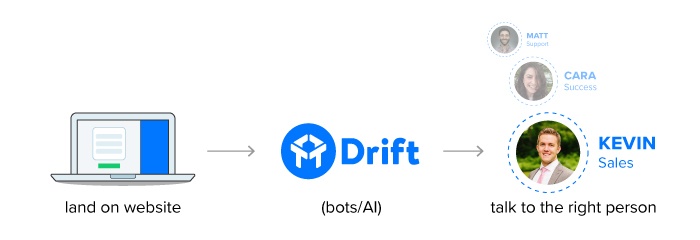
Sales leaders and marketing leaders have been having the same conversations — and the same arguments — for more than a decade now.
We’ve been arguing over volume of leads, and volume of trials, and what counts as a “quality” lead and what doesn’t.
Marketing leaders have been frustrated with falling conversion rates and always having their quality scores called into question before sales teams will reach out to leads.
Sales leaders, meanwhile, have been asking marketing for more volume at the top so they can supply their salespeople with enough leads.
I was having these exact conversations back in 2006 when I was a sales director at LogMeIn, and I was still having them ten years later as VP of Sales at Dyn.
But eventually I realized that it wasn’t the scoring system, the BDRs, or the qualification criteria. I realized that none of this was leading to real change.
When it was all said and done, marketing teams kept on forcing website visitors to fill out forms, and sales teams kept on hammering leads with follow-up emails and phone calls.
That was the playbook.
But as you’re probably starting to notice just as I did that the plays inside of that playbook don’t work so well anymore.
Times have changed, technology has grown up, and now that’s it 2017, we can’t afford to be selling like we’re still in the 2000s.
The 3 Things Every Modern Sales Team Should Be Focusing On in 2017
1) Adding Messaging to Your Sales Process
So you’ve got the phone, and you’ve got email, and maybe you’re even using social as an outreach tool.
But these days, more and more of your prospects are turning to messaging as their preferred way to communicate.

The takeaway here isn’t that you need to replace those other channels with messaging. But given that there’s now this additional way to communicate that billions of people are using, doesn’t it makes sense to at least include it in your sales motion?
And here’s the thing: You don’t have to dive into 1:1 messaging head-first.
My recommendation is that you start by adding live chat to your highest-intent pages, i.e. the pages that you know leads spend a lot of time visiting before they convert.
In most cases, the pricing page will be a good place to start. But you can also dig around in your analytics to identify other high-intent pages on your site.
From a training and ramp up perspective, there isn’t much to it. Most sales reps are already familiar with messaging software, so communicating that way is already a natural motion.
And if your sales team uses Slack, you can integrate Drift so reps can talk to website visitors and prospects right from Slack — a platform you know they’re already comfortable using.
You can also integrate live chat with your existing CRM, marketing automation software, and other tools, which means you don’t have to change your current setup in order to add messaging to your sales motion.
You can simply plug messaging into what you’re already doing.
2) Fixing Your BDR Process
Most companies are running a BDR process that is stuck in the early 2000s.
And that process looks something like this:
- Grab a list of the latest leads.
- Spend the next two weeks calling them.
- Repeat.
From a potential customer’s perspective, the timing is usually terrible when a BDR reaches out. It’s not the BDR’s fault, it’s just that a BDR has no control over where that person is or what they might be doing.
After getting forced to fill out forms, people don’t sit by the phone and wait for follow-up phone calls. (That’s why — on average — it takes BDRs nine touches over a course of two weeks before they’re able to qualify a given lead.)
These days, buyers have all the power. And they’d rather have those sales conversations when it’s convenient for them: while they’re live on your website.
So here’s a simple change: Start having your BDRs run weekly chat shifts.
We do this at Drift and call it chat duty. Everyone has an assigned day and time each week when they’re responsible for monitoring chat and talking to potential customers.
Remember: You don’t need your BDRs online around-the-clock, 24/7, in order to drive results with messaging. You can have them do a few hours per week on chat, and then let bots do the rest.
For example, at Drift we have a bot that qualifies leads for our sales team on our pricing page. That way our sales team is only talking to people after they’ve been qualified.
And because bots don’t ever need to sleep, they can continue to book qualified meetings for your team even after everyone’s signed out of chat for the day.
Finally, because all of a BDR’s conversations are automatically stored as (searchable) text with messaging software, catching up on the needs/concerns of a particular lead has never been simpler.
Instead of having to listen to an entire phone call, a sales rep can quickly read through a conversation, search for key terms, and immediately be brought up to speed.
When you bring all of these little improvements together, it results in a BDR process that is way more efficient.
3) Doing Account-Based Marketing the Right Way
(So You Can Stop Leaking Money)
Look, account-based marketing (ABM) is amazing. But there’s now a major disconnect between the investment companies are making in attracting quality leads and the investment they’re making in engaging those leads once they land on the site.
Cost-per-lead (CPL) has gone up, yet there hasn’t been any change in how sales teams close those more expensive leads into customers at a higher rate.
Companies are spending all of this time and all of this money getting the attention of these super-valuable targets, but then when they actually have their attention, they still serve them up a form and hit them with the same-old experience.
The Old Way

This is an age when buyers are used to having all of the information they need at their fingertips. So if you restrict it, and put your content and product info behind forms, it turns people off.
You need to stop sending people to dead ends and start engaging.
Even if you’re driving leads to targeted landing pages with your ABM efforts, think about how that experience translates to an in-store experience:
If your best lead walked into your store, would you give them a pen and a clipboard with a form to fill out before you started talking to them? Or would you treat them like a human and start talking to them right away?
By using messaging in place of forms, you can reach out — in real-time — to potential customers and say, “Hey, what’s going on? Anything I can help you with?”
With messaging, you can make the sales experience simpler, more enjoyable, and more human.
The New Way

Using this new approach, you can give the quality leads you’ve been generating with ABM the quality experiences they deserve.



